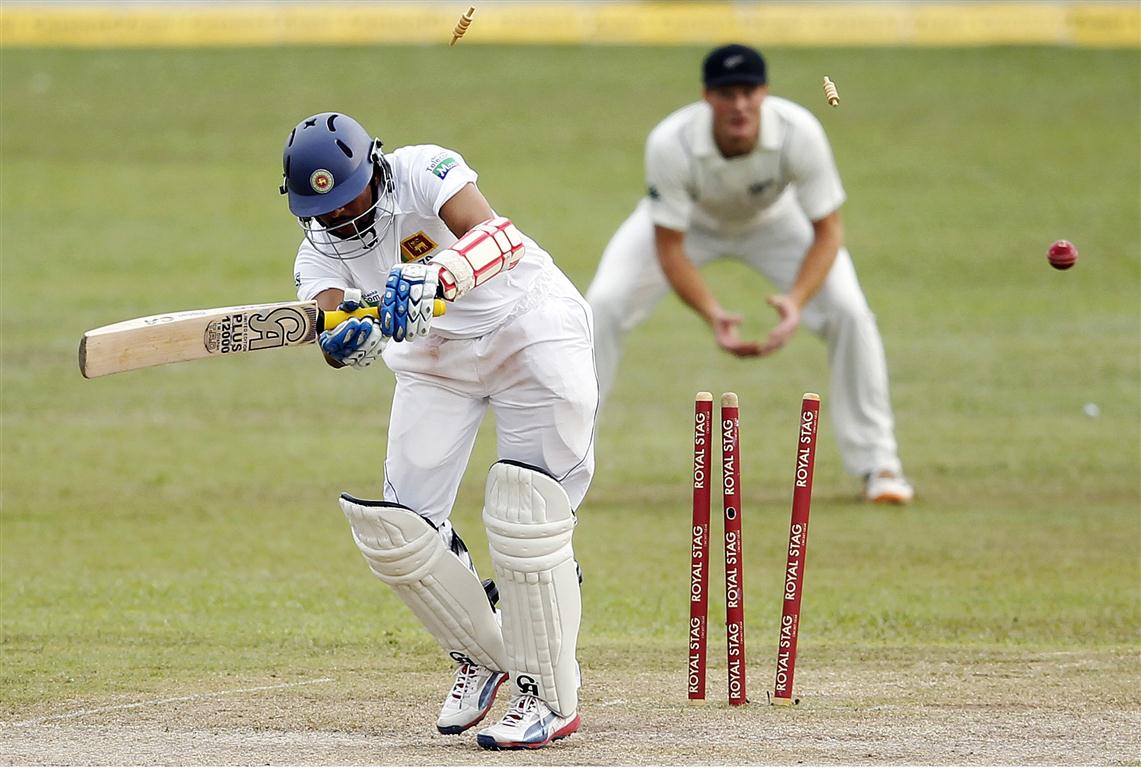How do you solve a problem like, on opener? A look back at England’s biggest weakness in light of the Sunfoil Test Series
New series, check.
New opener, check.
Since the retirement of Andrew Strauss, England have unsuccessfully trialed 8 openers to partner Alastair Cook.

Alex Hales recorded just 136 runs at an average of 17 over the course of the four match series. However, there is no doubting his quality. At times he seemed uncomfortable that he was unable to play his natural aggressive game. The big question here is; why shouldn’t he play aggressive cricket? Because it isn’t the English way? Arguably the best opener in world cricket over the past 18 months is none other than David Warner, the most aggressive opening batsman in the modern game. When he played his shots, Hales looked a lot more comfortable at the crease. When he was forced to batten down the hatches and fend off South Africa’s bowling, he didn’t quite know what to do. The big question is whether Hales will get another run out at the top of the order, and if so, how he will look to make his mark.
Hales will look to become the first man since Andrew Strauss to play 10 games at the top of the order alongside Cook. But what happened the other 7 guys who tried?
Those who tried, thosewho failed, those who we won’t see again
Unfortunately age is not on Michael Carberry’s side and it is unlikely that he’ll get another chance to open in Test cricket. It is likely that the selectors will look to younger players, in a hope of providing a long term solution to the opener problem. In contrast to this approach, Cricket Australia has tended to select players on their merit, regardless of their age. Case in point: Chris Rogers & Adam Voges. Both players have been central to Australia’s success over the past 24 months. One particular problem which arises, particularly in relation to Carberry is that people tend to rest too heavily on the stats, rather than the individual performances. Carberry’s stats would suggest that he isn’t cut out to open in international cricket. Games: 6. Runs: 345. 100s: 0. 50s: 1. Average: 28.75. Unfortunately, what the stats don’t show you is that Carberry was one of the few players who provided any resistance against a fiery Australian attack, led by a reborn Mitchell Johnson. What the stats don’t show you is that every English player failed somewhat against an attack on top of their game.
Jonathan Trott is and has been a phenomenal player for England since his debut in 2009 , but he isn’t an opener. Opening is one of the very specialist positions; one which can’t simply be filled by any player with a bit of talent. Similar to Trott, Moeen Ali possesses a lot of talent, but he is not a Test match opener. His best position is down the order, when he acts as an attacking batsman to take it to the bowlers. Outside the England set-up, Stiaan van Zyl was trialed as an opener for South Africa to no avail. A middle order batsman can’t simply be converted to an opening batsman. Although his stats don’t scream ‘world-beater Test opener’, Michael Atherton epitomizes the ideal Test opener. His ability to take the shine off the new ball and build a platform for the middle order was undoubtedly his greatest asset.
Joe Root featured in 5 tests at the top of the order and statistically has been the most successful partner for Cook since Strauss. However, like Ali, Root should not be wasted as an opening batsman. Joe Root is England’s number 4 batsman. He simply doesn’t throw his wicket away, can hold an innings together and can really take it to any bowling line up. It isn’t by mistake that Root climbed to the top of the Test rankings.
The one batsman who I’m most unsure of and somewhat reluctantly include in ‘those who we won’t see again’ is Adam Lyth. Lyth’s test scores are poor, at best. 265 runs in 7 Tests simply isn’t good enough. However, Lyth is still only 28 years old. There is every chance that he returns to County Cricket next summer and leads Yorkshire to another Championship victory and forces his way back into the mix. Similar to Robson (who is discussed below), Lyth has some technical issues which need to be corrected if he wants to gain an 8th test cap. PersonallyI would love to see Lyth get another go, if not based on his scores, but solely on the fact that he is one of the most popular and well liked guys in the English circuit.
Who will get another chance?
Hales will get another chance, at least against Sri Lanka in the summer home series. England can’t afford to drop anotheropener after 1 bad series. Of the 8 trialed openers over the last four years, only Nick Compton has been given more than 7 games to make a claim for himself. Even if Hales manages to average out at 30 across the Sri Lanka series, he will have bought himself at least one more series.
A number of good scores for Nick Compton at number 3 would most likely see him be given another dig at partnering Cook at the top of the order, if Hales were to struggle during summer 2016. Compton is a natural opener, no doubt about it. It’s just a matter of making the most of any possible chance he is given to prove his credentials. The second issue is whether Compton himself has ensured his place in the squad during the summer. Although Compton was one of England’s better batsman over the course of the series, some concerns have been raised in regard to his style of play. Like a typical opener, Compton takes his time. He has no problem batting at a strike rate of 30, while eating up as many balls as possible. The big issue is whether this is an acceptable return for a number 3 batsman. Does this open the door for Gary Ballance?
Another player who may work himself back into Trevor Bayliss’ plans is Sam Robson. The only way that Robson can do this is by going back to Middlesex and putting on some big scores. His 2015 figures are particularly poor and reflect one of his worst seasons in the domestic game. If you put the runs on the board, you can’t be ignored for that long (let’s just ignore that triple century by KP). Similar to Lyth again, Robson has some obvious technical flaws which he will have to work on before he can be considered again. It wouldn’t hurt that he’s Australian, right!? My thoughts, we won’t see him back for a while, but he most certainly has age on his side to give himself a second chance.
Those who we haven’t seen before?
Another man who has age on his side and who I have particular admiration for is Alex Lees. Lees is very well respected by his peers, with Andrew Gale comparing him to the great Matthew Hayden as far back as 2014. What’s so good about him? Aged just 20 years and 95 days old, Lees became Yorkshire’s youngest ever double centurion, smashing 275* against Derbyshire. Is that all? Lees has features in an England Lions squad and has also been rewarded with a call-up to theEngland Performance Programme in 2014. A difficult year in 2015 may have reduced Lees’ stock somewhat, but it certainly hasn’t ruined his chances of pushing for a Test start over the next 18 months. I know I’m repeating myself, but one good season might be all it takes for Lees to become Cook’s next and maybe long-term partner. Notably, Lee’s won the Cricket Writers’ Club Young Cricketer of the Year award in 2014, recognizing hi
s great year which helped steer Yorkshire to championship victory. It doesn’t hurt that Lees is coached by one of the most respected men in the domestic game, Jason Gillespie.
Although he isn’t a first-class opener by trade, James Vince has opened the batting in the short format of the game. A naturally aggressive player, who has had a number of positive showings for the Lions, Vince could be an attractive prospect. One thing that is certain is that he wouldn’t happily tick along at a strike rate of 30.
Rory Burns definitely isn’t the biggest name in the domestic circuit, but the numbers don’t lie (not this time anyway). Anyone who can score 1019 at 48.52 is always worth a look. Unfortunately Burns hasn’t yet been rewarded with an England Lions call-up, which may bridge the gap from domestic cricket to the international game. Right now, I feel like he’s a good bit off, but his figures mean that he must be included in the conversation.
What about that guy who scored 1311 runs in 2015, at an average of 45.20, Marcus Trescothick?!? Naah.
Whatever England do, they need to back their opener and give them a chance to perform. Whatever happens, no player needs to operate in an environment in which it’s ‘perform within 6 games or get the chop’. The step up to Test cricket is a big enough challenge without the added pressure. The selectors may look to Cricket South Africa for a bit of guidance, who have given Dean Elgar a chance to settle down as a Test opener despite struggling during the early stage of his career. As a result, Elgar has developed into a key member of the South African squad over the last number of months.


